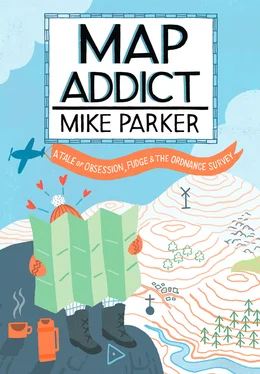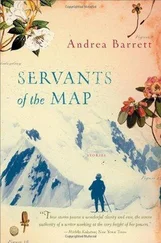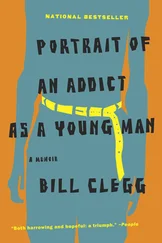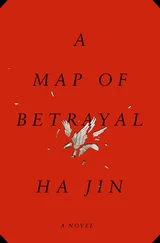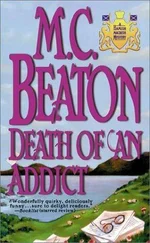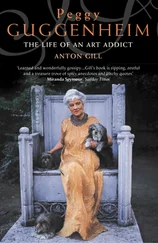We know frustratingly little about Major-General William Roy (1726-90), a map addict of impeccable credentials and the father of the Ordnance Survey. No portrait survives of him, few biographical details have come our way, but, from his plans, letters and publications, we can see a man utterly driven by maps and an insatiable urge to make them ever better. He started in his native Scotland, working with the surveying crews that had been drafted in as a response to the Jacobite uprisings in the Highlands of the 1740s. The official response was the same as always: go deep into enemy turf, build roads and military outposts, move the population to where they could better be tracked, and, most importantly of all, comprehensively map it. For years, this was Roy’s day job, though, as a sideline, he also worked obsessively to map the Roman remains of Scotland, for they had employed much the same techniques in suppressing the clans fifteen centuries earlier. There’s not much doubting what his specialist subject would have been on Georgian Mastermind .
The first survey of Scotland, between 1747 and 1752, was of the troublesome Highlands, when Roy was teamed up with the young Paul Sandby (1731-1809). Sandby, who later became one of the age’s most celebrated landscape painters and a founder member of the Royal Academy, provided the artistic talent for the beautiful maps that they produced, complementing Roy, the technical wizard who worried perpetually about getting the topographical detail correct. Once the Highlands had been comprehensively mapped, it was decided to survey and plot southern Scotland, but Sandby had returned to England by then and the resultant maps were nowhere near as spectacular as the earlier ones of the far north. Roy was a perfectionist, and the lack of precise measuring equipment frustrated him enormously; late in life, he wrote about these early map-making efforts in Scotland, describing them as ‘rather a magnificent military sketch, than a very accurate map of a country’.
From Scotland, Roy enlisted in the army and served with distinction in the Seven Years’ War with France. Once again, his map-making skills, and perfectionism, were usefully employed in his work as a special adviser on troop deployment and strategy. Roy’s reports on such matters included beautifully drawn maps that he always insisted on doing himself, the army draughtsmen and his subordinate officers just not being up to his exacting standards. This lack of trust in anyone else became a growing theme as his career moved towards its apogee.
On his return, he settled in London, and continued rising through the ranks of the army, while spending more and more time on his cartographic pursuits. Central to his ambition was finding the right equipment, or rather, having the right equipment created for his needs. Much of his time was spent experimenting with measuring instruments in order to see how they could be employed to produce the greatest possible accuracy. They were never quite good enough. Nonetheless, his military experiences abroad, and his knowledge of how far advanced the Dutch and French were in such matters, had convinced him that the time was ripe for a comprehensive national survey, and he first approached the authorities about the matter in 1763. With a canny knack for telling the government what he most thought they would respond to, he emphasised Britain’s vulnerability to invasion, particularly along the south coast, and the importance of conducting such a survey ‘during times of peace and tranquillity’, rather than waiting to do it under the chaotic cloud of war. They turned him down on grounds of expense. He re-presented his plans three years later, only to have them refused once again.
Impatient but undeterred, William Roy used every moment of his spare time to conduct his own informal triangulation experiments around London, establishing the position and distance of landmarks in the capital in relation to the Royal Observatory at Greenwich. Triangulation remained the bedrock of map-making until it was supplanted, less than thirty years ago, by satellite Global Positioning Systems (GPS) technology. The principle of triangulation is that if you know the length of one line of a triangle, and two of its angles to the other lines, the entire triangle can accurately be plotted for both distance and elevation. It’s an extremely time-consuming business, depending as it does on caddying heavy equipment up to the highest vantage points: the first triangulation of Britain and Ireland, started by William Roy in 1783, took nearly seventy years to complete.
Roy regularly presented his London triangulation findings to the Royal Society, so that when the inflammatory missive came from Paris in 1783, he seemed the obvious man to restore Britain’s dented honour by conducting the experiment. He was extremely well prepared, for he had used every one of his travels, both at home and abroad, to map the landscape and establish the most suitable places for triangulation. The flat expanse of Hounslow Heath, to the west of London, had long been selected as his preferred choice for the perfect base line. And although the project was nominally to establish only the precise relation of the London and Paris observatories, Roy knew well that it could, and should, be the harbinger of something far greater; that it could ‘extend different serieses [sic] of Triangles…in all directions to the remotest part of the Island’.
William Roy is an undoubted hero to any British map addict, but he is also something of a siren warning to us all. The brilliant young adventurer turned inexorably into a grumpy old man, for whom no one, and nothing, was ever quite good enough. Sounds familiar? I rather fear so. So fixated did he become by his great triangulation project that he picked fights with anyone who failed to come up to his exacting standards, most spectacularly in the case of instrument-maker Jesse Ramsden (1735-1800). Ramsden was just as much of a perfectionist as Roy, and with just as great a cause: his scientific and astronomical instruments attracted customers from across the world to his Piccadilly workshop. Roy’s greatest frustration throughout his map-making career was the fact that the measuring instruments available couldn’t cope with the precision that he demanded. For the great triangulation project of south-east England, Roy commissioned Ramsden to design and build the most exact theodolite ever seen.
Unfortunately, Ramsden failed to employ enough workmen on the project and thus to produce the goods soon enough for Roy, and the cartographer began to cast increasingly bellicose aspersions on the instrument-maker’s professional ability. The massive theodolite—it weighed over fourteen stone and had to be hauled around on a specially designed truck—was the finest ever created, but, to Roy’s continuing chagrin, it was still prone to some tiny errors and, most annoyingly, took a whole three years to build. In fairness to Roy, he was sixty years old and in failing health, so must have felt the continued delays with increasing impatience, urgently wanting to finish the project while he still could. That doesn’t excuse his behaviour, however, as he repeatedly complained about Ramsden to the Royal Society in letters and papers that became ever more dyspeptic. Ramsden, also a Fellow of the Society, responded in kind, so that members found themselves piggies-in-the-middle as complaints and counter-complaints between the two men resounded throughout the Society’s hallowed halls. Roy charged Ramsden with being ‘remiss and dilatory’ and ‘very negligent’; Ramsden whined back that ‘nothing could equal my surprise on hearing the charges brought against me by Major-General Roy…I was the more affected by it as coming from a Gentleman with whom I considered myself in Friendship’. This spat reached its climax in May 1790, when Ramsden demanded that the Royal Society expunge some of Roy’s more colourful slaggings of him from their records. Sadly, William Roy died a few weeks later, the matter still unresolved. It was an acrimonious—and, to us, salutary—end to a brilliant career.
Читать дальше
